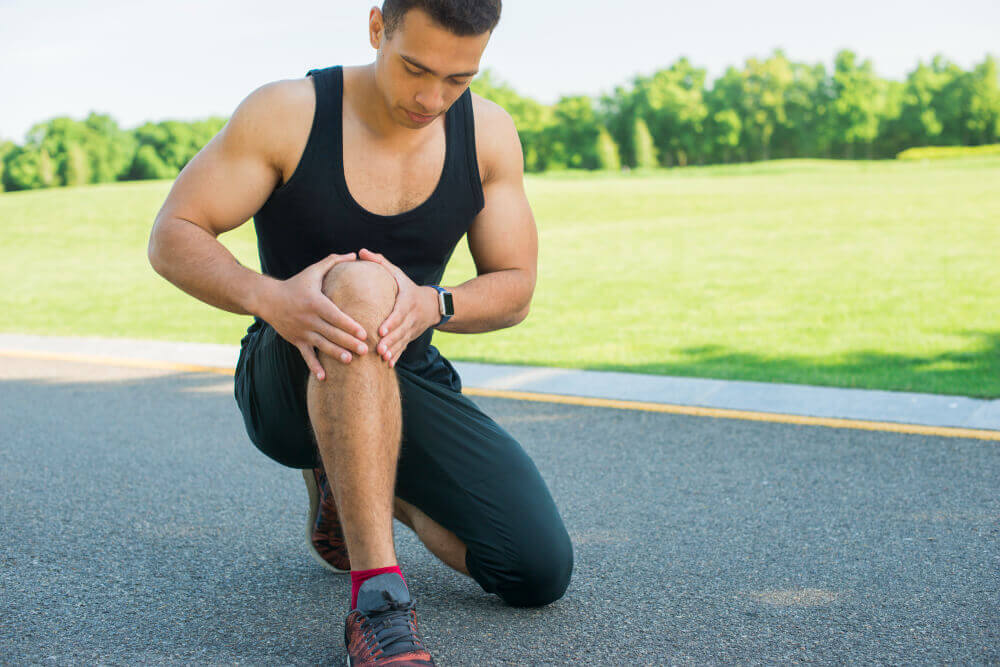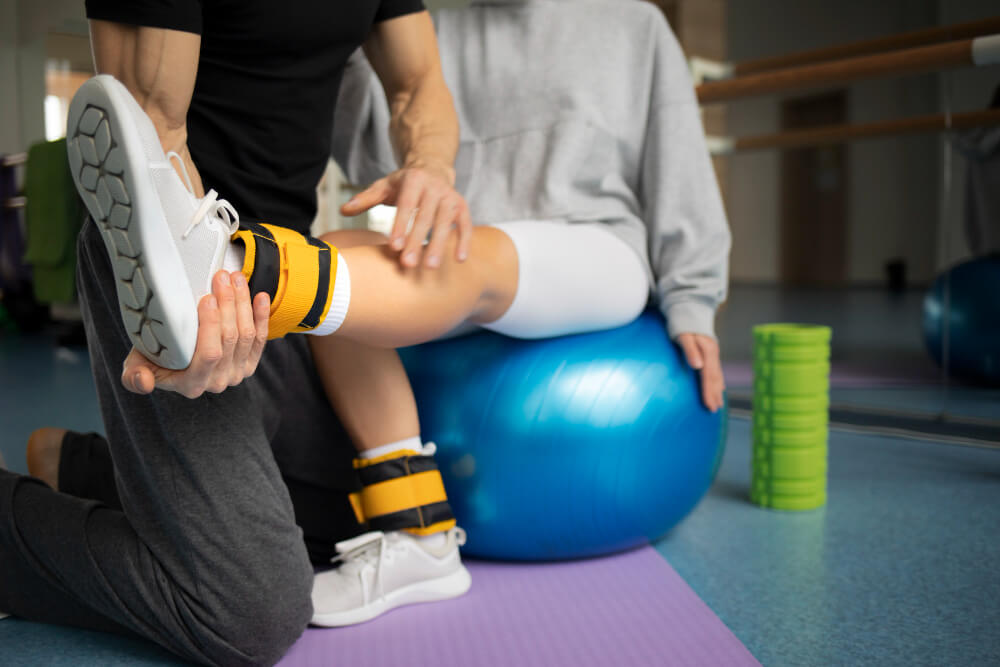Conquering the Course: Effective Treatments for Runner’s Knee and Spinal Sports Injuries
Hitting the pavement can be incredibly rewarding, but for many runners, the joy of running can be hampered by common injuries like runner’s knee and spinal pain. These conditions can not only derail your training but also significantly impact your daily life. However, fear not, fellow runners! This comprehensive guide explores runner’s knee and spinal sports injuries, equipping you with the knowledge and resources to not just manage pain, but conquer it and return to a pain-free stride.
Understanding Runner’s Knee
Runner’s knee, also known as patellofemoral pain syndrome (PFPS), is a general term encompassing various conditions that cause pain around the kneecap. It’s a prevalent complaint among runners, especially those who increase their training intensity or distance too quickly.
Here’s a breakdown of the culprits behind runner’s knee:
- Misalignment: Improper tracking of the kneecap due to weak muscles or tight tissues can lead to irritation and pain.
- Overuse: Repetitive stress on the kneecap and surrounding structures from running can cause inflammation.
- Muscle Imbalances: Weak quadriceps or tight hamstrings can disrupt knee mechanics, leading to pain.
- Improper Footwear: Worn-out shoes or those lacking sufficient support can contribute to runner’s knee.
Recognizing the Signs of Runner’s Knee
Early detection of runner’s knee is crucial for a faster and more effective recovery. Be on the lookout for these symptoms:
- Dull ache or sharp pain around the front of the kneecap, especially during or after running
- Pain that worsens with activities like climbing stairs or squatting
- Grinding or popping sensation in the knee
- Difficulty bending or straightening the knee fully
Effective Treatment Options for Runner’s Knee
The good news is that runner’s knee is highly treatable with non-surgical methods in most cases. Here’s an arsenal of strategies to combat knee pain:
- Rest and Activity Modification: Take a break from high-impact activities that exacerbate pain. Opt for low-impact exercises like swimming or cycling to maintain fitness.
- RICE Therapy: This acronym stands for Rest, Ice, Compression, and Elevation. Apply ice packs to the affected area for 15-20 minutes at a time, several times a day. Compression sleeves can help reduce swelling, while elevating the knee above the heart promotes drainage.
- Strength Training: Targeted exercises to strengthen your quadriceps, hamstrings, and core muscles improve stability and knee alignment, reducing stress on the kneecap.
- Stretching: Regularly stretching tight muscles in the hips, hamstrings, and calves can improve flexibility and range of motion, alleviating pain.
- Physical Therapy: A physical therapist can assess your specific condition, create a personalized exercise program, and provide manual therapy techniques to improve flexibility and joint mechanics.
- Orthotics: Custom orthotics can offer additional support and correct biomechanical imbalances in your feet, taking stress off the knee joint.
Anti-inflammatory Medication: Over-the-counter pain relievers like ibuprofen can help manage pain and inflammation in the short term.
Pro Tip: Consider consulting a registered dietitian to optimize your nutrition for faster healing.
Conquering the Core: Addressing Spinal Sports Injuries
The spine is a complex structure that plays a crucial role in running form and injury prevention. Unfortunately, runners are susceptible to various spinal injuries, including:
- Lower Back Pain: This can be caused by muscle strain, ligament sprain, or disc herniation.
- Sciatica: Characterized by pain radiating down the leg due to irritation of the sciatic nerve, often stemming from a lower back issue.
- Spondylolysis: Stress fracture in the pars interarticularis, a small bone segment in the vertebrae.
Recognizing the Signs of Spinal Sports Injuries
Early detection is crucial for managing spinal sports injuries effectively. Here are some red flags to watch out for:
- Pain or stiffness in the lower back, especially during or after running
- Pain that worsens with certain movements like bending forward or twisting
- Numbness, tingling, or weakness in one or both legs
- Difficulty standing or sitting for extended periods
Effective Treatment Options for Spinal Sports Injuries
Spinal sports injuries also respond well to non-surgical interventions in most cases. Here’s how to tackle back pain and keep running:
- Rest and Activity Modification: Take a break from running and high-impact activities that aggravate pain. Opt for low-impact exercises like swimming or walking to maintain fitness. This allows for inflammation to subside and promotes healing. Gradually reintroduce running as pain improves.
- Ice and Heat Therapy: Apply ice packs to the affected area for 15-20 minutes at a time, several times a day, particularly in the acute phase of injury. This helps reduce inflammation and pain. As the pain subsides, switch to heat therapy using a heating pad or warm compress to improve blood flow and promote healing.
- Posture Correction: Poor posture can contribute to spinal stress and pain. A physical therapist can assess your posture and guide you on stretches and exercises to improve core strength and alignment, reducing strain on the spine.
- Strengthening Exercises: Building a strong core and back muscles is crucial for spinal stability and support. A physical therapist can create a personalized exercise program targeting back extensors, abdominal muscles, and glutes to improve core strength and support the spine.
- Flexibility Training: Tight muscles in the hips, hamstrings, and lower back can contribute to spinal pain. Regular stretching improves flexibility and range of motion in the spine and surrounding muscles, reducing pain and preventing future injuries.
- Manual Therapy Techniques: Techniques like massage therapy and chiropractic adjustments (performed by a licensed chiropractor) can help improve joint mobility, reduce muscle tension, and promote pain relief in the spine.
- Anti-inflammatory Medication: Over-the-counter pain relievers like ibuprofen can help manage pain and inflammation in the short term. However, it’s important to consult your doctor before starting any medication.
Pro Tip: Consider ergonomic adjustments at work to maintain good posture while sitting for extended periods.
When to Seek Medical Attention:
While most spinal sports injuries respond well to conservative treatment, certain situations warrant a doctor’s visit:
- Severe or persistent pain that doesn’t improve with rest and home remedies
- Pain that radiates down the leg (sciatica)
- Loss of bowel or bladder control
- Numbness or weakness in one or both legs
- Difficulty standing or walking
Early diagnosis and intervention can significantly improve the outcome and help you return to running safely.
Preventing Runner’s Knee and Spinal Sports Injuries
Prevention is always better than cure. Here are some tips to keep running pain-free:
- Proper Running Form: A running coach can help you analyze your running form and identify any biomechanical imbalances that could lead to injury.
- Gradual Training Progression: Increase your running distance and intensity gradually to allow your body to adapt and prevent overuse injuries.
- Warm-Up and Cool-Down: Perform dynamic stretches before your run to prepare your muscles and static stretches afterward to improve flexibility and prevent tightness.
- Proper Footwear: Invest in running shoes that provide adequate support and cushioning for your running style and terrain. Replace worn-out shoes regularly.
- Cross-Training: Supplement your running routine with activities like swimming, cycling, or yoga to improve overall fitness and reduce stress on your joints.
- Listen to Your Body: Pay attention to your body’s signals. Take rest days when you feel fatigued or experience pain. Pushing through pain can worsen an injury.
By following these strategies, you can significantly reduce your risk of developing runner’s knee and spinal sports injuries, allowing you to enjoy the joy of running for years to come.


